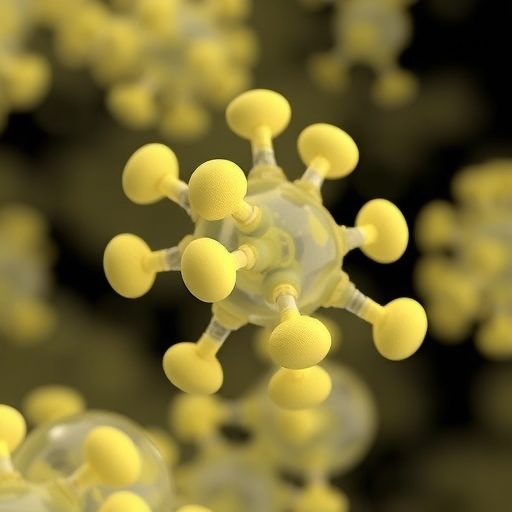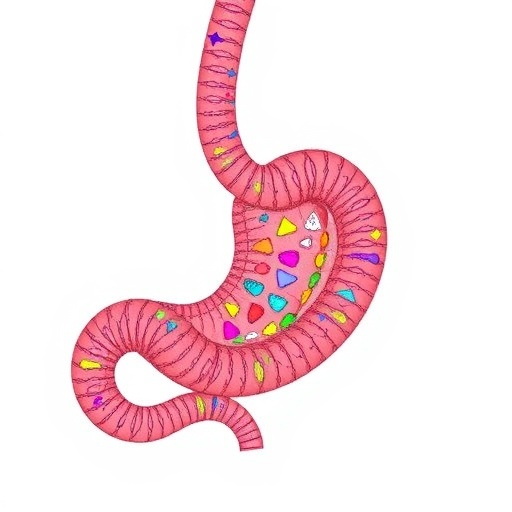
In the rapidly evolving landscape of food science and biotechnology, the encapsulation of bioactive compounds has emerged as a pivotal area of research, promising enhanced stability, controlled release, and targeted delivery of functional ingredients. A recent groundbreaking study sheds light on an innovative approach to this challenge, employing citric acid-modified starch nanoparticles to encapsulate saturated fatty acids effectively. This novel methodology explores the nuanced interplay of hydrophobicity in optimizing encapsulation efficiency and stability, marking a significant stride in nano-encapsulation technology with far-reaching implications across food, pharmaceutical, and cosmetic industries.
At the core of this pioneering research lies the modification of starch, a biopolymer ubiquitously found in nature, to create nanoparticles through citric acid treatment. Starch, renowned for its biocompatibility, biodegradability, and availability, has conventionally been limited by its hydrophilic nature, which poses challenges when incorporating hydrophobic substances such as saturated fatty acids. By chemically modifying starch with citric acid, the researchers ingeniously introduced ester linkages that bestow amphiphilic character to the starch nanoparticles, thereby enhancing their affinity for hydrophobic molecules.
Saturated fatty acids, abundant in various dietary and industrial fats, present a unique encapsulation challenge due to their non-polar characteristics and susceptibility to oxidation. The encapsulation of these fatty acids within a stable, biodegradable matrix is critical not only for preserving their functional attributes but also for modulating their bioavailability and sensory properties in food products. The citric acid-modified starch nanoparticles demonstrated a remarkable capacity to encapsulate a range of saturated fatty acids, maintaining structural integrity and stability under diverse environmental conditions.
The study delves deep into the physicochemical properties of these modified nanoparticles, employing advanced characterization techniques such as Fourier-transform infrared spectroscopy (FTIR), scanning electron microscopy (SEM), and dynamic light scattering (DLS) to elucidate the structural transformations induced by citric acid modification. These analyses confirmed successful esterification of starch hydroxyl groups, resulting in tailored surface functionalities that significantly augmented hydrophobic interactions necessary for fatty acid encapsulation.
Moreover, the particle size distribution achieved through this modification indicated the formation of uniformly sized nanoparticles, crucial for consistent encapsulation performance and reproducibility in industrial applications. The dynamic interplay between particle size, surface charge, and hydrophobicity was meticulously examined, revealing optimized parameters that maximize fatty acid loading capacity without compromising nanoparticle stability or dispersibility in aqueous media.
One of the most compelling aspects of the research is the insight into how hydrophobicity governs encapsulation efficiency. By modulating the degree of citric acid substitution, the researchers effectively tuned the hydrophobic-hydrophilic balance of the nanoparticles. This fine control allowed for tailored interaction with fatty acids of varying chain lengths and saturation levels, highlighting the versatility and adaptability of the system.
Importantly, the study did not solely focus on static encapsulation but extended to evaluate the release kinetics of the fatty acids from the nanoparticles. Controlled release is a critical factor in functional food design, where the timing and localization of nutrient delivery can influence metabolic outcomes. The citric acid-modified starch matrices exhibited sustained release profiles, modulated by the extent of chemical modification and environmental pH, indicating potential for targeted delivery in gastrointestinal conditions.
Beyond the biochemical and physical evaluations, the environmental and safety implications of this encapsulation system were also considered, positioning the technology within the framework of green chemistry and sustainable food production. The use of starch as a renewable resource combined with citric acid, a naturally occurring organic acid, underscores the eco-friendly nature of the nanoparticle synthesis process—an advantage for future scale-up and commercial adaptation.
The applicability of this encapsulation technology extends well beyond mere preservation of fatty acids. Encapsulated saturated fats impact the texture, flavor release, and nutritional profile of food products, and by controlling their interaction at the nano-scale, manufacturers can unlock new sensory experiences or health benefits. This opens avenues for innovative product design in functional foods and nutraceuticals, where modulation of fatty acid bioavailability is paramount.
Furthermore, this study aligns with broader trends in nanotechnology-driven food science, where precision delivery systems are revolutionizing how bioactive molecules are incorporated into consumables. The customization possibilities inherent in citric acid-modified starch nanoparticles could lead to multi-functional carriers capable of encapsulating a range of hydrophobic nutrients, antioxidants, or lipid-soluble vitamins, widening their industrial relevance.
From a practical standpoint, the synthesis methodology outlined in this work is both scalable and cost-effective, relying on mild reaction conditions and readily available reagents. This baseline feasibility encourages the exploration of translational pathways from laboratory research to real-world applications, which may include fortified beverages, dairy alternatives, or meat analogs fortified with beneficial fatty acid profiles.
Embedding such encapsulation systems into food matrices requires a rigorous understanding of their interaction with other ingredients and processing parameters. The resilience of these nanoparticles to various processing stresses such as heat, shear, and pH shifts was implied favorable, suggesting compatibility with standard food manufacturing processes. This resilience is key to preserving nutrient stability throughout shelf life and consumer use.
The implications of this research extend into health sciences as well, as saturated fatty acid consumption remains a contentious topic with respect to cardiovascular risk and metabolic health. Encapsulation that modifies absorption kinetics and bioaccessibility could pave the way for mitigating adverse effects while harnessing functional roles of these molecules, such as energy provision and cell membrane stability.
In the realm of pharmaceuticals and cosmetics, similar encapsulation strategies may be employed to deliver lipid-soluble actives more effectively. The biocompatibility and versatility of the citric acid-modified starch nanoparticles hint at cross-sector applications, particularly when targeted delivery and sustained release are desired.
Ultimately, this study represents a confluence of interdisciplinary expertise, combining polymer chemistry, colloidal science, and nutritional biochemistry to generate a sophisticated yet practical solution to a longstanding challenge. The detailed investigation into hydrophobicity and its manipulation through citric acid functionalization sets a precedent for future research aiming to customize nano-carriers for a broad spectrum of bioactive compounds.
In conclusion, the development of citric acid-modified starch nanoparticles as carriers for saturated fatty acids marks a milestone in nano-encapsulation research, embodying innovation, sustainability, and practical relevance. As this technology matures and integrates with food and health industries, it holds the promise of transforming how bioactive lipids are stabilized, delivered, and absorbed, ultimately contributing to improved nutritional outcomes and novel product experiences.
Subject of Research: Encapsulation of saturated fatty acids using citric acid-modified starch nanoparticles with focus on the role of hydrophobicity.
Article Title: Citric acid-modified starch nanoparticles for saturated fatty acid encapsulation: role of hydrophobicity.
Article References:
Miskeen, S., Shin, HY., An, Y.S. et al. Citric acid-modified starch nanoparticles for saturated fatty acid encapsulation: role of hydrophobicity.
Food Sci Biotechnol (2025). https://doi.org/10.1007/s10068-025-01989-7
Image Credits: AI Generated
DOI: https://doi.org/10.1007/s10068-025-01989-7
Tags: amphiphilic properties of modified starchapplications in pharmaceutical and cosmetic industriesbiocompatibility of starch nanoparticlesbiodegradable nanoparticle formulationscitric acid-modified biopolymerscontrolled release of bioactive compoundsenhancing encapsulation efficiencyhydrophobic starch nanoparticlesinnovative food biotechnology researchnano-encapsulation technology in food sciencesaturated fatty acid encapsulation techniquesstability of encapsulated fatty acids




